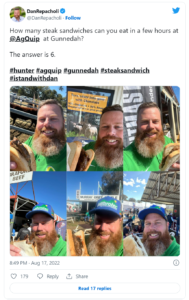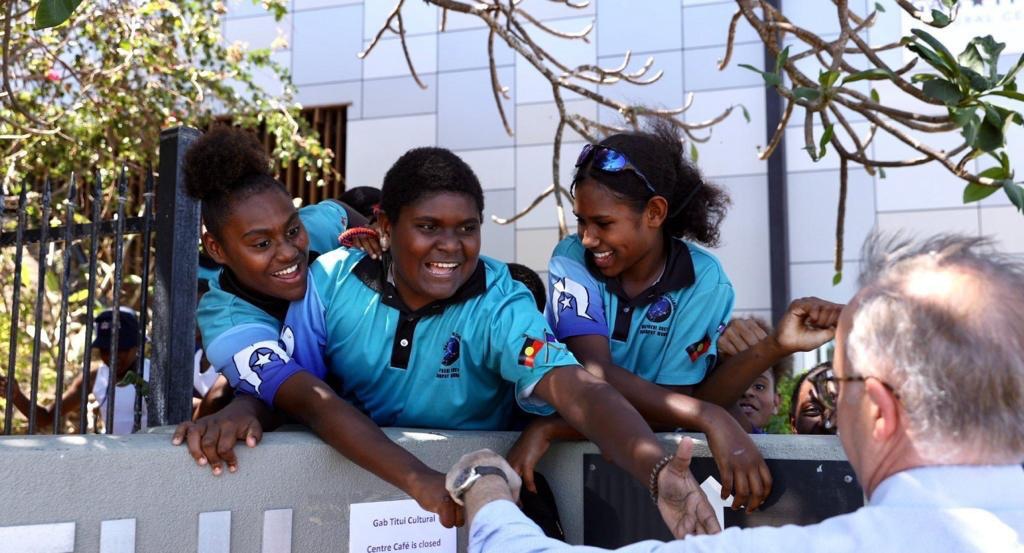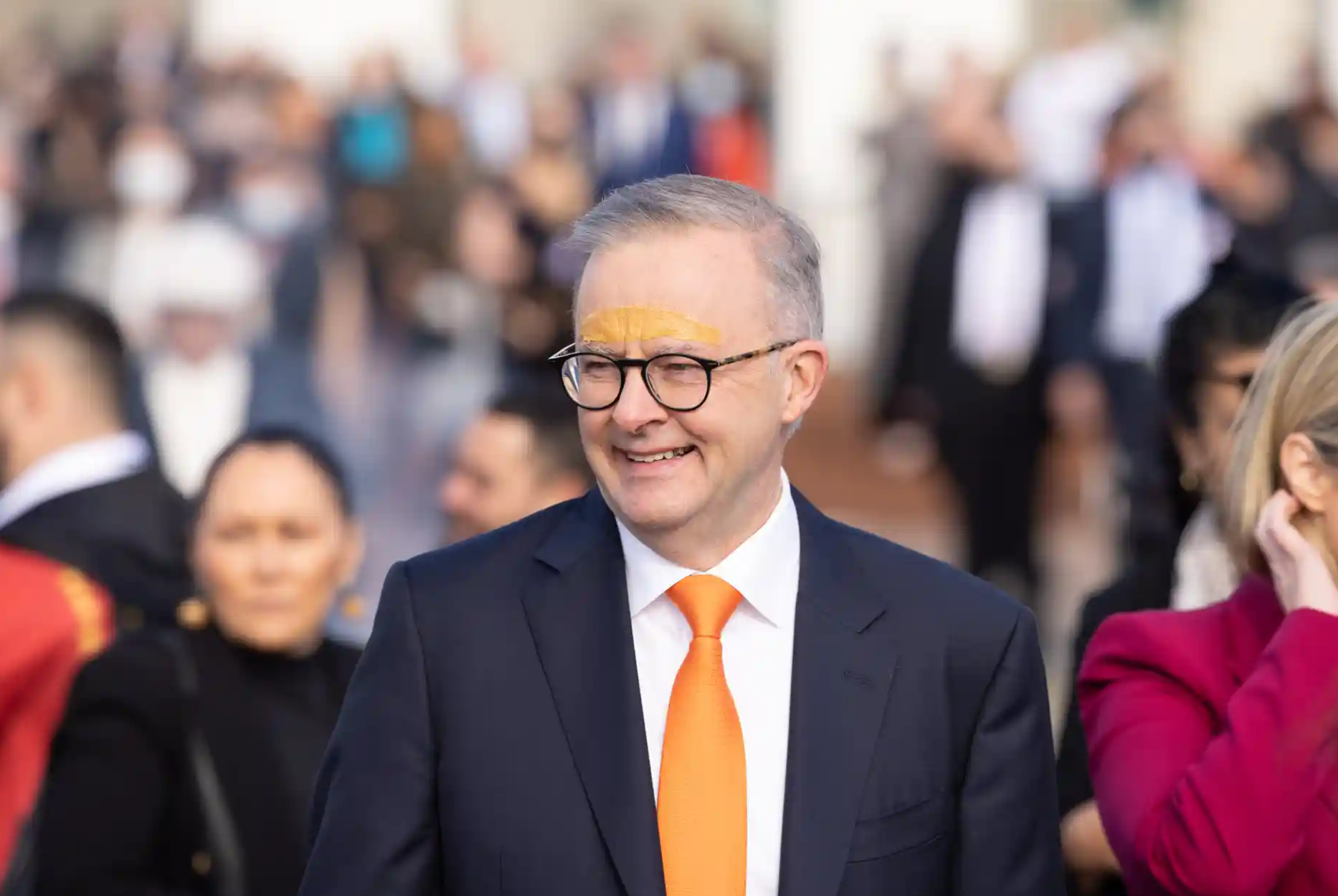Voice and History: The battle for the representational face of Australia
Last week marked the 51st anniversary of Senator Neville Bonner’s election as the first federal Indigenous representative in the Australian parliament. If you’ve paid attention to the media since the election, you have undoubtedly heard that the 47th Parliament is the most diverse yet. A record number of First Nations have taken their place in Parliament, with 11 First Nations members.
Eight Indigenous senators have taken their seats in the upper house, and three Indigenous MPs in the House of Representatives. That brings the total First Nations representation in the Parliament to 4.8%, higher than the 3.3% recorded in the last census.
Despite the influx of MPs from diverse backgrounds, Australia still lags behind many similar multicultural countries regarding representation.
The most significant gains have been made in the proportion of female representatives, now making up 38% of the House of Representatives and 57% of the Senate – a record for both chambers.
Though 23% of Australians claim a non-European ancestry, just 6.6% – or 15 out of the 227 MPs – have overseas non-European backgrounds. Only 4.4% of MPs in the Parliament have Asian heritage, compared with 18% of the Australian population at large.
Labor’s ranks are more diverse than the Coalition, with Indigenous members making up 5.9% of the caucus. With two senators, Indigenous members make up 1.25% of the Coalition.
Unfortunately, increased representation in this term of Parliament does not guarantee any increase in the 48th or 49th, with Labor continuing affirmative action rulings for female candidates and preselection but no such rules for indigenous members.
First Nations People face “representational dilemmas” once in Parliament, as they not only manage the expectations of diverse Indigenous communities but also the needs of their constituents and support their party’s overall policies. As the nation grapples with voting “yes” or “no” on the promised referendum to include an Indigenous Voice in the constitution, it’s important to understand the history of Indigenous representation and why it is essential for a more inclusive Australia.
The slow-moving wheel of change
In drafting Australia’s constitution, references to First Nations People were made only twice: Aboriginal people were to be managed by state authorities, not the Commonwealth. Views at the time of the drafting extended them to be part of the Flora and Fauna Act. However, Law Professor Helen Irving disputed this view, noting that the act did not reference indigenous Australians.
Between 1910 and the 1960s, a national discussion emerged debating the wisdom of state-based Indigenous welfare. Colonial bodies across Australia had acted since the mid-1800s to “protect” children, but in real terms, it meant a systematic theft of children from their parents, community and country. These bodies were rebranded and remained with the last New South Wales Aborigines Welfare Board abolished in 1969.
Key events of the 1960s that informed the growing national awareness of the state of indigenous people in Australia included the Yolngu people’s 1963 presentation of the Yirrkala bark petition to the Commonwealth government, the 1965 Freedom Ride and the 1966 Wave Hill Walk-Off.
Cooper, a Yorta Yorta man, born around 1860 near the junction of the Murray and Goulburn rivers in Victoria, played pivotal roles in the Cummeragunja Walk-Off and founded the Australian Aborigines League. Growing up during a time when Aboriginal people were not considered citizens of the land they lived in, Cooper acted tirelessly as an advocate for Indigenous rights.
A national referendum was held by the Liberal government in 1967, with 90.77% of Australian people voting “yes” to give Indigenous people the right to be counted in the census and granted the Commonwealth the capacity to legislate for Aboriginal and Torres Strait Islander people.
From this step, governments have grappled with striking a legislative balance.
Picking up the Pace
Since the 67 referenda, the Whitlam Government abolished discriminatory treatment of Aboriginal and Torres Strait Islander peoples. When the Queensland Government failed to amend or repeal discriminatory laws towards indigenous peoples, the Whitlam Government passed legislation to override them. In 1975 Prime Minister Whitlam visited Daguragu, and in a ceremony, he returned the land to the Gurindji people. Whitlam famously poured a handful of soil through Vincent Lingiari’s hands, proclaiming,
“I put into your hands part of the earth itself as a sign that this land will be the possession of you and your children forever.”
The Hawke Government continued this legacy, handing back the Uluru-Kata Tjuta National Park title deeds to the Anangu people in October 1985. Hawke pursued an Indigenous treaty when signing the Barunga statement in 1988 but was unsuccessful.
Paul Keating led his government’s response to the High court ruling, which has become known as Mabo— repeatedly advocating in favour of the judgment and for an expansion of Aboriginal and Torres Strait Islander land rights. On 10 December 1992, Keating delivered a primary address that came to be known as the Redfern Park Speech on Aboriginal reconciliation.
“We took the traditional lands and smashed the traditional way of life. We brought the diseases and the alcohol.” – Prime Minister Paul Keating 1992.
The Howard government introduced amendments to the Native Title Act in 1998. The ‘Wik 10-Point-Plan’ introduction limited negotiations, particularly on mining or pastoral leases.
“What has happened with Native Title is that the pendulum has swung too far in one direction, particularly after the Wik decision. What I have done with this legislation is bring it back to the middle.” – Prime Minister John Howard 1997.
In the wake of the ‘Little Children Are Sacred’ report in 2007, the Howard Government invoked the Northern Territory Emergency Response with a focus on protecting Indigenous children from sexual abuse and family violence. As it came to be known, the intervention gave the Government power to acquire Aboriginal land for five years and quarantine half of all welfare payments for essential items.
In 2008, freshly elected Prime Minister Kevin Rudd formally apologised to Indigenous Australians, stating –
“For the pain, suffering and hurt of these stolen generations, their descendants and for their families left behind, we say sorry.
To the mothers and the fathers, the brothers and the sisters, for the breaking up of families and communities, we say sorry.
And for the indignity and degradation thus inflicted on a proud people and a proud culture, we say sorry.”
Under the Turnbull Government, the Uluru Statement of the Heart faced cabinet rejection in 2017, with the then Prime Minister confirming it is neither “desirable or capable of winning acceptance at referendum”.
With new energy placed on the Indigenous Portfolio by the Albanese Labor Government and Indigenous Affairs Minister Linda Burney, we ask this question.
The question of The Voice?
Australia now faces its next step in Indigenous representation in Parliament. The Prime Minister’s first utterance to Parliament was a commitment to the Uluru Statement from the Heart. Prime Minister Albanese followed his election commitment with a drafted question pledging to hold another Australia-wide referendum in adding a constitutional Voice to Parliament for Indigenous Peoples.
The Prime Minister’s suggested wording of the question – “Do you support an alteration to the Constitution that establishes an Aboriginal and Torres Strait Islander Voice?”
There is much contention within Parliament and Australia’s general public over the necessity for A Voice to Parliament. So what would it mean?
- The Voice would act as an advisory body.
- It will provide insights from a cross-section of First Nations Australians. None of this would override any federal or state powers.
- Adding a constitutional requirement for an Indigenous presence would act as a safeguard to ensure a level of Indigenous representation and acknowledgment without relying on another diverse parliament such as the 47th.
Represent us
In the same way that Julia Gillard’s rise to prime minister sparked more female activation in politics, the presence of First Nations MPs can encourage other Indigenous candidates to stand for election, recognising the power and impact of the decisions made by parliamentarians.
Indigenous representation in Parliament can potentially lift indigenous activation in politics, which currently battles chronically low levels of Indigenous voter enrolment and turnout. Supporting efforts of the AEC to increase participation in remote areas while igniting strong pushes for indigenous candidates in regional and metropolitan regions despite funding cuts over the last decade.
The diversity of viewpoints can not be understated. Indigenous MPs’ connections to their communities are vital in bringing diversity to the dispatch box and holding the Parliament accountable.
Indeed, this will be a long-standing discussion until the referendum comes about. There are nuances to such a difficult conversation, history to consider, and a future to decide. But there’s no doubt that a critical discussion is under-way, and increased diversity of Australia’s Parliament will continue to foster such conversations.
In Case You Missed It & Tweet of the Week

Latest posts by Nexus APAC (see all)
- United Kingdom General Election 2024: An Overview - April 15, 2024
- Australian Voters Go to the Polls - February 26, 2024
- Secretaries of Federal Departments – An Overview - February 1, 2024



